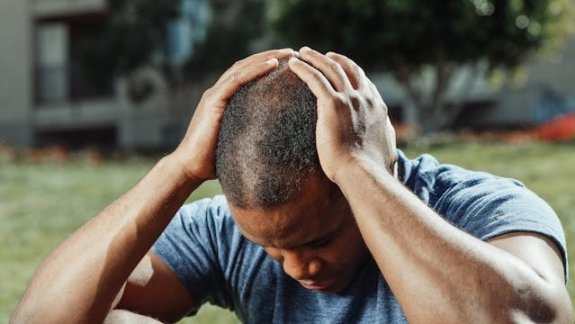Encountering a cracked head injury can be a frightening experience, particularly if it results in a cracked skull. Such an injury necessitates immediate medical attention and a comprehensive recovery plan.
Understanding the treatment protocol and the recovery process is essential in promoting healing and preventing further complications.

Table of Contents
Immediate Steps Post-injury
Following a head injury with a potential skull fracture, taking the right immediate actions is crucial for the victim’s well-being and recovery.
Seek Medical Attention
The moment a head injury occurs, especially one that might involve a skull fracture, seeking medical attention should be the top priority. Contact emergency services or go to the nearest emergency room to get professional help. Medical professionals will evaluate the injury and determine the best course of action.
The initial evaluation will likely include a physical examination and possibly imaging tests, such as an X-ray or CT scan, to assess the extent of the injury. This step is critical in head treatment to prevent any potential complications and ensure a proper recovery plan is put in place.
Contact Emergency Services
If you suspect someone has a head injury, call emergency services immediately. A quick response can make a significant difference in the outcome of the injury. Emergency responders are trained to handle head injuries and can provide the necessary care and support during transportation to a medical facility.
It is important to stay calm and provide as much information as possible about the head injury and the circumstances surrounding it to the emergency team.
Avoid Movement
After a head injury, it is crucial to minimize movement. Moving the injured person can cause further harm, especially if there is a possible skull fracture or spinal injury. Keep the person still until medical help arrives.
If necessary, move them for safety reasons, do so carefully, and try to keep their head and neck as stable as possible. This precaution helps to prevent any additional injuries or complications.
Monitor Symptoms
After a head injury, closely monitoring the victim’s symptoms is crucial for assessing their condition. Look for signs such as confusion, dizziness, severe headache, nausea, or any unusual behavior. It’s important to note any changes in consciousness or alertness, including difficulties in waking up.
Additionally, keep an eye on the person for any signs of physical changes like clear fluids draining from the nose or ears, which could indicate a serious issue.
Immediate reporting of these symptoms to medical professionals can aid in the timely treatment and management of potential complications.
Medical Treatment
After taking the immediate steps post-injury, the focus shifts to the medical treatment necessary for recovery.
Diagnostic Testing
Diagnostic testing is an important step in treating a head injury. It helps doctors see inside the head to check for damage. They often use X-rays and CT scans for this. X-rays can show if there is a skull fracture. CT scans give a clearer picture of the brain and can find injuries like bleeding or swelling.
These tests are quick and can provide vital information to guide the treatment plan. MRI scans may also be used if more detail is needed. Doctors decide which tests are needed based on the injury.
Surgery
Sometimes, when a person has a bad head injury, they might need surgery. Surgery is when doctors fix the injury by opening up and working inside the head. If there’s bleeding in the brain or if the skull is broken in a way that it presses on the brain, doctors might decide surgery is needed to help.
In surgery, doctors can stop the bleeding, take out any pieces of bone that shouldn’t be there, or relieve pressure if the brain is swelling. It’s a way to help the person start healing and feeling better.
Medications
Medications are an important part of getting better after a head injury. Doctors give these medicines to help with different problems that might happen. Some medicines can help with headaches or keep the brain from swelling. Others might stop seizures, which are like electrical storms in the brain that can happen after an injury.
The doctors will choose the best medicines to help heal the brain and keep the person as comfortable as possible. It’s very important to take these medicines just like the doctor says.
Recovery Process
The recovery process from a head injury is a critical and often complex phase that requires patience and careful management.
Rest and Observation
Rest and observation play key roles in the recovery from a head injury. During this time, the person needs to have plenty of sleep and avoid activities that could strain their brain, like reading, using screens, or doing physical activities.
Doctors recommend staying in a quiet and comfortable space to help the brain heal. Observing the person’s behavior and health is also crucial.
Family members or caregivers should look for any new or worsening symptoms and report them to a doctor right away. This careful watching helps catch any problems early, ensuring the person gets the right help quickly.
Follow-up Care
Follow-up care is very important after a head injury. It means going back to see the doctor even if you feel better. These visits help the doctor check how your brain is healing. You might have more tests or treatments if needed.
The doctor will also advise on when to go back to normal activities. It’s a way to make sure you are recovering well and to catch any problems early. Follow-up care keeps you on the right path to getting better.
Rehabilitation
Rehabilitation is an important step in the recovery from a head injury. It helps people get back to their daily routines and activities. This process can include physical therapy to improve strength and balance. There is also speech therapy if someone has trouble talking after the injury.
For emotional support and coping strategies, counseling is available. Some people may benefit from specialized treatments to help with brain function. One such place offering innovative treatments is this ketamine clinic in California.
They use ketamine, which can help with mood and pain management. Rehab is tailored to meet each person’s needs, helping them recover at their own pace.
Long-Term Considerations
Recovering from a head injury involves not only immediate and short-term care but also requires attention to long-term considerations for a full return to health.
Gradual Return to Activities
A gradual return to activities is key after a head injury. This means slowly starting to do more as you feel better. At first, light activities like walking can be good. Then, you can try more as long as symptoms don’t get worse.
It’s important to listen to your body and not rush things. If an activity makes symptoms come back, take a step back and rest more.
Your doctor will help decide when you can go back to work or school and give tips on how to do it safely. Taking it slow helps make sure your brain heals the right way.
Support Systems
Having a strong support system is crucial during recovery from a head injury. Family, friends, and support groups can offer emotional comfort and practical help. They can assist with daily tasks, provide transportation to doctor appointments, and offer a listening ear.
Professionals like therapists or rehabilitation specialists also form part of this support, guiding the recovery process with expert advice. It’s important to reach out and stay connected to these support networks to not feel alone during the recovery journey.
Lifestyle Adjustments
Making lifestyle adjustments is a big part of recovering from a head injury. Eating healthy foods helps the brain heal. Staying hydrated by drinking plenty of water is also important. It’s good to avoid alcohol and drugs, as they can slow down recovery.
Getting enough sleep each night helps a lot, too. Finally, finding ways to reduce stress, like meditation or gentle yoga, can make recovery smoother. These changes can support the healing process and improve overall well-being.
Preventing Further Injury
Preventing further injury after a head injury is very important. Always wear protective gear like helmets when biking, skating, or playing contact sports. Be careful not to slip or fall, especially in risky areas like wet floors or during activities such as climbing.
Follow all safety rules and guidelines in sports and work environments. Make your home safer by removing tripping hazards and installing good lighting. Always use seat belts and child safety seats in cars. Taking these steps helps protect your head and prevent new injuries.
Learn All About Cracked Head
In conclusion, if you hurt your cracked head and think it might be serious, don’t wait around. Go see a doctor right away. They’ll check you out and tell you what to do next, maybe give you some medicine, or even do surgery if it’s really bad.
Then, you have to take it easy, follow what the doctor says, and maybe go to some rehab if you need help getting back on track. Don’t rush; getting better takes time. Keep your head safe in the future, too, so you don’t go through this again. You know, use your head to protect your head.
Did you find this article helpful? Check out the rest of our blog.




